Current members of the UCP group
 |
Prof. Klaas Wynne, chair of chemical physics in the School of Chemistry at Glasgow University since 2010. |
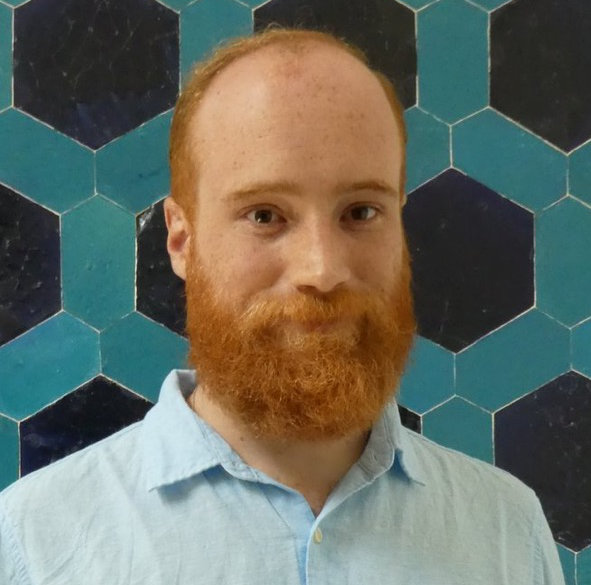 |
Dr. Mario González Jiménez, research associate since December 2013. Mario is working on the ultrafast dynamics of biomolecules, in particular, DNA and its interaction with water. He is also pushing the mosquito project in collaboration with malaria researchers in MVLS. |
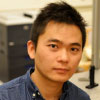 |
Dr. Zhiyu Liao, research associate since December 2019. Zhiyu is working on the ERC project CONTROL in which optical tweezers are used to "pull" crystals out of solution. In particular, he will be developing a new set-up using spatial light modulators tocarry out laser-induced phase separation and nucleation (LIPSaN) and combine this with spectroscopic techniques such as fluorescence and Raman, |
 |
Dr. Ben Russell, research associate starting March 2020. Ben will be working on the ERC project CONTROL in which optical tweezers are used to "pull" crystals out of solution. In particular he will be studying non-classical nucleation of small molecules, peptides, and proteins usiong phase diagram control and combine this with LIPSaN. |
 |
Dr. Ankita Das, research associate starting September 2022. Ankita will be investigating crystal nucleation using laser tweezing as part of the ERC project CONTROL. |
 |
Laure-Anne Hayes, PhD student starting 2023. Laure-Anne will be investigating solutions that provide a cross-over between molecular and soft-matter behaviour that hopefully will also provide insight in crystal nucleation and amorphous matter. |
 |
Dr. Daniel Kuroda, Associate Professor in the Department of Chemistry at Louisiana State University, http://2dirlab.lsu.edu. Dan will visit us to apply optical Kerr effect spectroscopy to battery materials. |
Former members
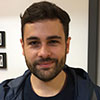 |
Josh Mitton, LKAS PhD student since October 2018 jointly with Roderick Murray-Smith in the School of Computing Science. Josh has been working on machine learning in chemistry. |
 |
Dr. Nikita Tukachev, research associate from October 2020 to December 2022 jointly with Dr. Hans Senn. Nikita has been investigating the numerical description of terahertz Raman spectra of biomolecules using MM/QM techniques. |
Sarah Huynen
 PhD student started October 2020. Sarah was working on nonclassical crystal nucleation and fluorescence.
PhD student started October 2020. Sarah was working on nonclassical crystal nucleation and fluorescence.
John Bolling
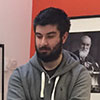 PhD student since October 2017. John's project is on microscopic imaging and manipulation of matter usign lasers.
PhD student since October 2017. John's project is on microscopic imaging and manipulation of matter usign lasers.
Dr. Andrew Farrell
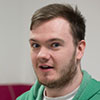 PhD student from October 2016 till January 2020. Andy's research project involved ultrafast dynamics in liquids, liquid-liquid transitions, and nucleation.
PhD student from October 2016 till January 2020. Andy's research project involved ultrafast dynamics in liquids, liquid-liquid transitions, and nucleation.
Dr. Finlay Walton
 PhD student since October 2015. Finlay's research project is on microscopy and manipulation of phase transitions including crystallisation, liquid-liquid transitions, and liquid crystal transitions. He also aided the mosquito project before he started his PhD.
PhD student since October 2015. Finlay's research project is on microscopy and manipulation of phase transitions including crystallisation, liquid-liquid transitions, and liquid crystal transitions. He also aided the mosquito project before he started his PhD.
Dr. Kathryn Allan
 Journal of the American Chemical Society (JACS) editorial assistant since 2017.
Journal of the American Chemical Society (JACS) editorial assistant since 2017.
Dr Judith Reichenbach
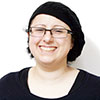 PhD student since October 2013, graduated in 2017. Her research project involved the study of non-classical crystal nucleation effects and ionic liquids using ultrafast spectroscopy.
PhD student since October 2013, graduated in 2017. Her research project involved the study of non-classical crystal nucleation effects and ionic liquids using ultrafast spectroscopy.
Dr Gopakumar Ramakrishnan
 Research associate from February 2014 to March 2017. Gopakumar is an expert in terahertz spectroscopy and was carrying out a project on terahertz spectroscopy of biomolecules.
Research associate from February 2014 to March 2017. Gopakumar is an expert in terahertz spectroscopy and was carrying out a project on terahertz spectroscopy of biomolecules.
Dr. Chris Syme
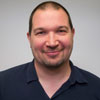 Research associate from October 2012 to July 2016. Chris is an expert in Raman spectrosocpy and microscopy and was carrying out a project using confocal fluorescence microscopy and fluorescence lifetime imaging.
Research associate from October 2012 to July 2016. Chris is an expert in Raman spectrosocpy and microscopy and was carrying out a project using confocal fluorescence microscopy and fluorescence lifetime imaging.
Dr. Joanna (Asia) Mosses
 Joanna Mosses, PhD student with KW since October 2010, graduated in 2017. Her research project involves the study of liquid-liquid phase transitions using microscopy and light scattering.
Joanna Mosses, PhD student with KW since October 2010, graduated in 2017. Her research project involves the study of liquid-liquid phase transitions using microscopy and light scattering.
Dr. Thomas Harwood
 Thomas Harwood, visiting PhD student from the lab of Elizabeth Ellis at the University of Strathclyde. Graduated in 2016.
Thomas Harwood, visiting PhD student from the lab of Elizabeth Ellis at the University of Strathclyde. Graduated in 2016.
Thomas Sonnleitner
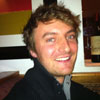 Thomas Sonnleitner, visiting PhD student from the lab of Richard Buchner at the University of Regensburg. Studies room temperature ionic liquids (RTILs) using dielectric relaxation spectroscopy.
Thomas Sonnleitner, visiting PhD student from the lab of Richard Buchner at the University of Regensburg. Studies room temperature ionic liquids (RTILs) using dielectric relaxation spectroscopy.
Dr. David Turton
 Dr. David Turton, research associate with KW from 2004 to 2013. David is an expert in ultrafast laser spectroscopy, in particular, terahertz spectroscopies. These have been applied to various liquids and biomolecular systems.
Dr. David Turton, research associate with KW from 2004 to 2013. David is an expert in ultrafast laser spectroscopy, in particular, terahertz spectroscopies. These have been applied to various liquids and biomolecular systems.
Marc White
 Marc White, MSc student with Lee Cronin, Chick Wilson, and KW, October 2010-2011. His research project involved the study of crystallisation and solutions using light scattering.
Marc White, MSc student with Lee Cronin, Chick Wilson, and KW, October 2010-2011. His research project involved the study of crystallisation and solutions using light scattering.
Dr. Scott Campbell
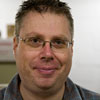 Former PhD student with KW since December 2007. Terahertz techniques and spectroscopy.
Former PhD student with KW since December 2007. Terahertz techniques and spectroscopy.
Dr. Marco Candelaresi
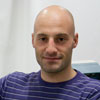 Marco Candelaresi joined in the group as Postdoctoral fellow in July 2009. He was awarded the PhD in Atomic and Molecular spectroscopy by LENS (European Laboratory for Non Linear Spectroscopy) University of Florence in February 2009. The PhD activity concerned mainly the structural and dynamical behaviour of dipeptides in different solvent, and the chemical equilibrium of methylacetate in water. With KW he was developing terahertz field-induced second-harmonic generation (TFISH) experiments in order to study molecular dynamics of liquids. Since November 2010 he has been working with Neil Hunt in the Department of Physics at Strathclyde.
Marco Candelaresi joined in the group as Postdoctoral fellow in July 2009. He was awarded the PhD in Atomic and Molecular spectroscopy by LENS (European Laboratory for Non Linear Spectroscopy) University of Florence in February 2009. The PhD activity concerned mainly the structural and dynamical behaviour of dipeptides in different solvent, and the chemical equilibrium of methylacetate in water. With KW he was developing terahertz field-induced second-harmonic generation (TFISH) experiments in order to study molecular dynamics of liquids. Since November 2010 he has been working with Neil Hunt in the Department of Physics at Strathclyde.
Prof. Neil Hunt
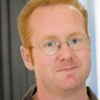 Neil is a Reader in the Department of Physics at the University of Strathclyde. He was an EPSRC Advanced Research Fellow working in the ultrafast physical-chemistry group from 2004. For more information see Neil Hunt on the academic staff pages.
Neil is a Reader in the Department of Physics at the University of Strathclyde. He was an EPSRC Advanced Research Fellow working in the ultrafast physical-chemistry group from 2004. For more information see Neil Hunt on the academic staff pages.
Dr. Kitsakorn Locharoenrat
 Kitsakorn received his BS in Chemical Engineering from Chulalongkorn University, Bangkok, Thailand and continued for his MS in Processing Technology at the Asian Institute of Technology, Pathumthani, Thailand. His studied for his PhD in Physical Materials Science with Prof Mizutani at the Japan Advanced Institute of Science and Technology (JAIST), Ishikawa, Japan. He was a postdoctoral researcher in the Ultrafast group in BCP in 2008/9 and worked on novel terahertz radiation emitters based on nanostructured surfaces. He now works at Research for Electronic Science in Japan.
Kitsakorn received his BS in Chemical Engineering from Chulalongkorn University, Bangkok, Thailand and continued for his MS in Processing Technology at the Asian Institute of Technology, Pathumthani, Thailand. His studied for his PhD in Physical Materials Science with Prof Mizutani at the Japan Advanced Institute of Science and Technology (JAIST), Ishikawa, Japan. He was a postdoctoral researcher in the Ultrafast group in BCP in 2008/9 and worked on novel terahertz radiation emitters based on nanostructured surfaces. He now works at Research for Electronic Science in Japan.
Dr. Gregor H. Welsh
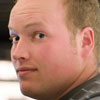 Gregor studied physics at Strathclyde and did his PhD in our group graduating in June 2008 on the thesis entitled "Understanding and Control of Ultrafast Currents for Terahertz Pulse Generation". Bound copies of his thesis are available in the Physics reading room and the Strathclyde library. He is currently a postdoc in the TOPS group.
Gregor studied physics at Strathclyde and did his PhD in our group graduating in June 2008 on the thesis entitled "Understanding and Control of Ultrafast Currents for Terahertz Pulse Generation". Bound copies of his thesis are available in the Physics reading room and the Strathclyde library. He is currently a postdoc in the TOPS group.
Dr. Andy Turner
 Andy has been a postdoctoral fellow in the ultrafast sub-group from 2004-2006. As a theoretician, he provided theoretical insight into the varied experimental results. Andy is principally interested in using state-of-the-art computational and quantum theoretical techniques to study the dynamic properties of biological molecules. He is currently working in the Department of Chemistry at the University of Edinburgh as Research Computing Officer.
Andy has been a postdoctoral fellow in the ultrafast sub-group from 2004-2006. As a theoretician, he provided theoretical insight into the varied experimental results. Andy is principally interested in using state-of-the-art computational and quantum theoretical techniques to study the dynamic properties of biological molecules. He is currently working in the Department of Chemistry at the University of Edinburgh as Research Computing Officer.
Dr. John J. Carey
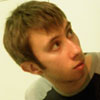 JJ studied Physics at Strathclyde and graduated with a BSc Hons in 1999. He is a former postgraduate student in KW's group and received his PhD in Physics in 2002 (You can download a copy of his thesis "Near-Field Effects of Terahertz Pulses" (PDF, 5Mb)). He has been a postdoc in the ultrafast sub-group studying varied aspects of terahertz pulses. He currently works with Coherent Scotland in Glasgow. He married Justyna (see below) and has two kids.
JJ studied Physics at Strathclyde and graduated with a BSc Hons in 1999. He is a former postgraduate student in KW's group and received his PhD in Physics in 2002 (You can download a copy of his thesis "Near-Field Effects of Terahertz Pulses" (PDF, 5Mb)). He has been a postdoc in the ultrafast sub-group studying varied aspects of terahertz pulses. He currently works with Coherent Scotland in Glasgow. He married Justyna (see below) and has two kids.
Dr. Gerard Giraud
 GG did his undergrad partially in France and partially at Strathclyde. He was a postgrad student in our group working on optical Kerr-effect experiments to study room-temperature organic ionic liquids and proteins. His PhD thesis is online as a PDF file. GG now works at the University of Edinburgh.
GG did his undergrad partially in France and partially at Strathclyde. He was a postgrad student in our group working on optical Kerr-effect experiments to study room-temperature organic ionic liquids and proteins. His PhD thesis is online as a PDF file. GG now works at the University of Edinburgh.
Dr. Justyna Zawadzka
 JZ got her master's degree in Poland and got her PhD working in the ultrafast group as a postgrad. Her research involved making femtosecond electron pulses by using multiphoton excitation of metal surfaces and surfaces modified by nanolithography. Her PhD thesis is online as a PDF file. She married John Carey (see above) and has two kids.
JZ got her master's degree in Poland and got her PhD working in the ultrafast group as a postgrad. Her research involved making femtosecond electron pulses by using multiphoton excitation of metal surfaces and surfaces modified by nanolithography. Her PhD thesis is online as a PDF file. She married John Carey (see above) and has two kids.














